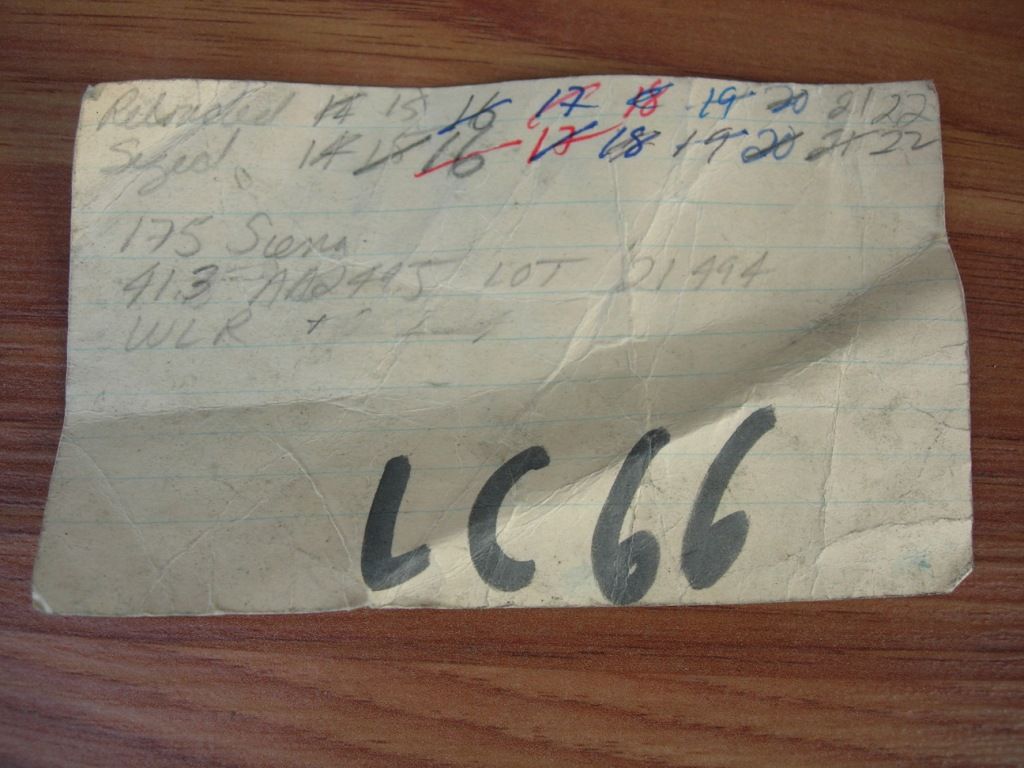Case length gauges often don't measure the expansion at the base of the brass, so if you have a tight chamber in your AR-10 you might need to get small a base resizing die even if the case length is in spec.
I agree. I also use small base dies for my gas guns because of this issue.
There are those who don't believe you need to use small base dies for Garands, M1a's or AR10's. I am going to try to show how it could make a difference.
Recently I shot my newly rebarreled M1a in a local reduced course match. I think I was the only Dinosaur shooting 30 caliber on the line. This rifle has a Barnett barrel and the commerical chamber dimensions are smaller than the standard military rifle. I am able to tell the difference when sizing brass for this rifle, compared to sizing brass from my FAL. The FAL has such a huge chamber that it is very difficult to small base size those cases.
I have 308 and 30-6 gages, cut by Gene Barnett which are a little out of the ordinary. He cut these gages with his chambering reamer. Standard cartridge headspace gages are cut with a special reamer that is wide in the middle. A standard cartridge headspace gage measures length, not “fatness”. A reamer cut headspace gage will show you if the case is too long and too “fat” for that chamber.
I have a number of 308 small base dies, and I still have my Lee standard die.
I sized a number of my match cases in the Lee die. All of them dropped in the reamer cut case gage. So, if you said you don’t need small base dies, you would be correct most of the time.
So now I had to scratch around trying to find cases that would prove my point.
These two cases are once fired range pickup brass that I found in my brass box. I had to go through about 20 cases before I found a set of really ballooned cases. On the right is the Barnett reamer cut gage.
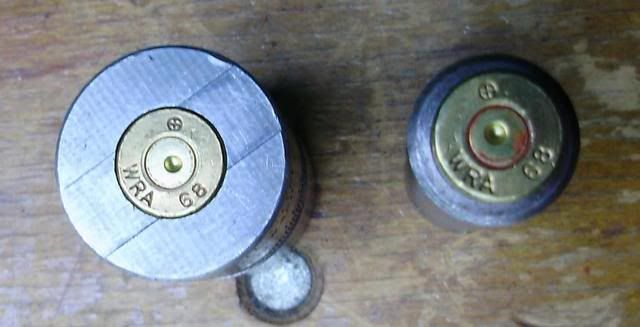
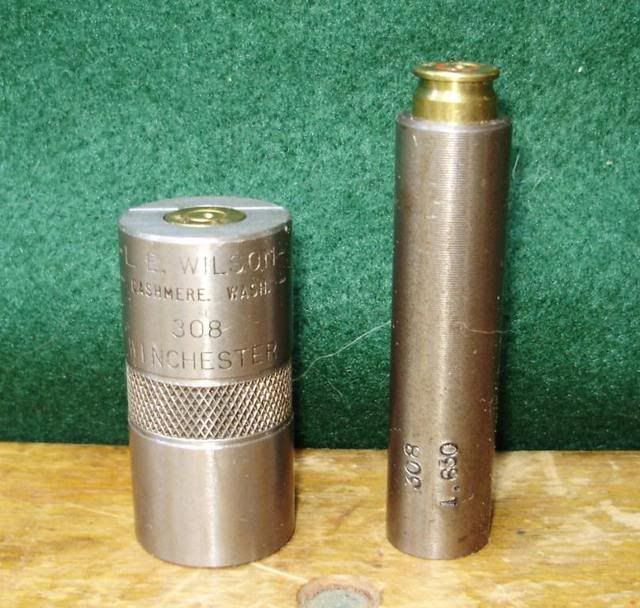
If you notice one case has completed dropped into the Wilson cartridge headspace gage, while the other has not dropped into the Barnett reamer cut gage. This shows how much they have swelled up after being fired. Must have been a big chamber.
The second picture is of the fattest of the group after sizing in with Lee Die. I trimmed the thing to make sure that the case neck did not interfere with the throat in the gage.
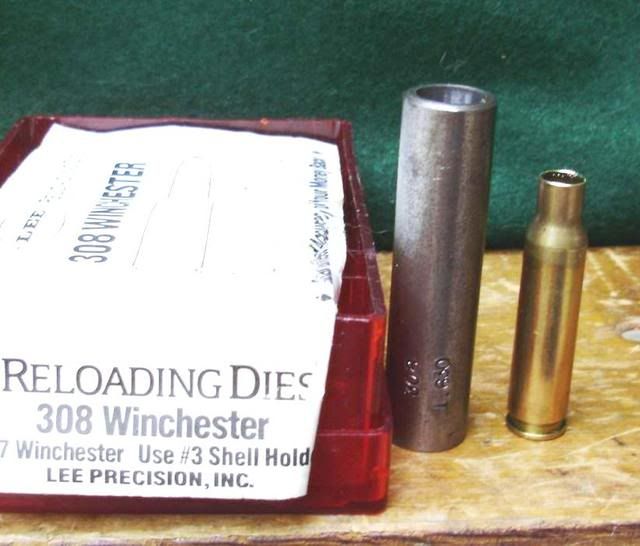
Hopefully you can see that the case did not drop all the way in the case gage. At least on its own. It would have taken a good hard push to get that base all the way in.
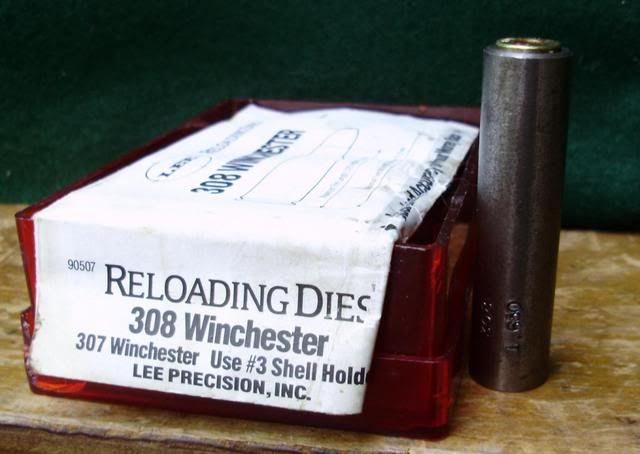
This is after resizing in my RCBS small base die. I could not find the RCBS box, so the case/gage are sitting on a Redding small base box. However, that little additional sizing removed the interference fit.
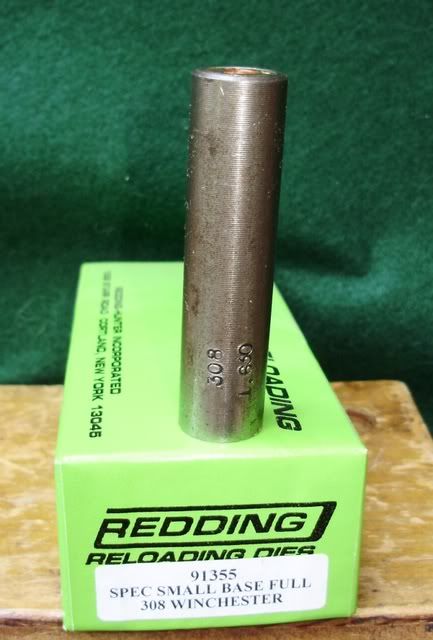
Sometimes cases are so ballooned that even a small base die won’t reduce the case to factory dimensions. It all depends on the chamber the round was fired in.
I know it is extra effort to size cases with small base dies, if you use a good lube like Imperial Sizing wax or RCBS case lube, the effort is somewhat reduced. Still for all the extra bother involved in sizing with small base dies I'll do it for my Garands and M1a's. With those rifles I don’t want any resistance to chambering, I don’t want any delay to bolt closure. Because as the bolt stops and the lugs are turning, that darn free floating firing pin is just tapping the heck out of the primer.
Now just two weeks ago, a shooting bud of mine was having jams with his AR10. He was using Dillion carbide 308 dies, which sufficiently sized the LC brass he had, for width, but he was not using his Dillion case gauge properly. At the range, we had to dismantle his AR10, because we could not get the bolt closed on one of his rounds. I separated the upper from the lower, then we played a game of bash the charging handle, to get the round out of the chamber. His cases were so long, from base to shoulder, that we could not get the rifle to reliably chamber his rounds. This was also true of his 308 M700. Once we got to his house, and I adjusted his die, so it sized cases to gauge minimum, we had no problems with chambering.
Also, don't load to reloading manual maximums. They are way too high for these gas guns. For example, I recommend a maximum load of 42.5 grains IMR 4895 with a 150 grain bullet, and 41.5 grains of IMR 4895 with a 168. Bud was loading 44 grains with a 168 and having extraction issues. He got that load from a manual, which is tailored for bolt guns. Once we got his issues straightened out, he went back to the range and was firing sub MOA groups, and the rifle functioned each time.






